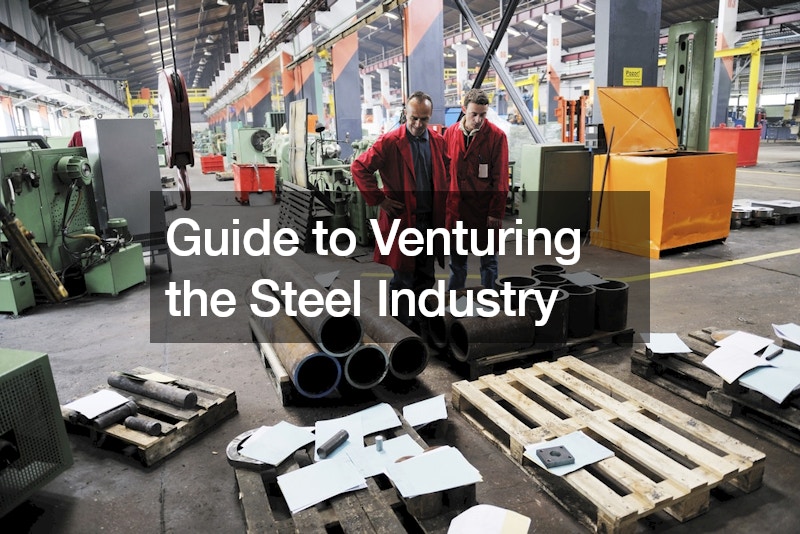The steel industry stands as a pillar of economic growth, serving as the backbone for various sectors worldwide. As one of the most vital metals globally, steel plays a crucial role in driving industrial development and infrastructure projects. For aspiring entrepreneurs seeking lucrative ventures, delving into the steel industry presents a myriad of opportunities. This comprehensive guide navigates the landscape of the steel industry, outlining key business ideas and strategies for success.
Understanding the Significance of Steel
Steel remains a fundamental component in numerous industries, including construction, manufacturing, automotive, and infrastructure development.
Its versatility, durability, and strength make it indispensable for a wide range of applications. From skyscrapers to automobiles, steel is the material of choice for engineers and architects globally. Consequently, the demand for steel continues to soar, driving growth and innovation within the industry.
Embracing Market Dynamics
Understanding the evolving market dynamics is paramount for success in the steel industry. Entrepreneurs must conduct thorough market research to identify emerging trends, consumer preferences, and competitive landscapes. By analyzing market demand and supply patterns, entrepreneurs can discern lucrative niches and tailor their business strategies accordingly. Moreover, staying attuned to technological advancements, regulatory changes, and global market shifts enables entrepreneurs to seize opportunities and mitigate risks effectively.
Exploring Lucrative Business Ideas
Iron Recycling Business: With the growing emphasis on sustainability, iron recycling emerges as a profitable venture. Recycling iron not only conserves resources but also aligns with eco-friendly practices. Entrepreneurs can capitalize on this opportunity by establishing efficient recycling processes and collaborating with metal recycling centers.
Nuts and Bolts Manufacturing: As the construction industry expands, the demand for nuts and bolts remains steady. Setting up a nuts and bolts manufacturing unit requires moderate investment and basic machinery. By delivering high-quality products tailored to market needs, entrepreneurs can carve a niche in this segment.
Steel Furniture Making: Steel furniture continues to enjoy popularity due to its durability and aesthetic appeal. Entrepreneurs can tap into this market by offering innovative designs and customized solutions. By leveraging market trends and consumer preferences, a steel furniture business can thrive in a competitive landscape.
Barbed Wire Manufacturing: Barbed wire finds extensive use in agriculture and security fencing. Establishing a barbed wire manufacturing unit entails catering to the demand for quality fencing solutions. Partnering with agricultural suppliers and construction firms can facilitate market penetration and business growth.
TMT Bar Manufacturing: With rapid urbanization driving construction activities, the demand for TMT bars remains robust. Entrepreneurs venturing into TMT bar manufacturing must prioritize quality control and production efficiency. Collaborating with construction companies and contractors can secure a stable market share.
Navigating the Business Landscape
Market Research and Analysis: Before venturing into the steel industry, conduct comprehensive market research to identify emerging trends, consumer preferences, and competitive dynamics. Understanding market demand and supply patterns is crucial for devising a viable business strategy.
Establishing Supplier Relationships: Building strong relationships with steel suppliers is essential for securing a consistent supply of raw materials at competitive prices. Collaborating with a reputable steel supplier ensures product quality and reliability, fostering long-term partnerships.
Investing in Technology and Innovation: Embracing technological advancements enhances operational efficiency and product quality. Investing in state-of-the-art machinery and adopting innovative manufacturing processes positions businesses for sustained growth and competitiveness.
Compliance and Regulation: Adhering to industry regulations and safety standards is paramount for operating a successful steel business. Stay abreast of regulatory updates and ensure compliance with environmental regulations and workplace safety protocols.
Leveraging Export-Import Opportunities
The global steel market offers abundant export-import opportunities for entrepreneurs keen on international trade. Becoming a steel supplier or importer/exporter requires thorough market analysis, regulatory compliance, and logistics management. By tapping into global markets, businesses can diversify revenue streams and expand their market presence.
Navigating Operational Challenges
While the steel industry offers abundant opportunities, entrepreneurs must navigate various operational challenges to ensure sustained success. From optimizing production processes to managing supply chain logistics, effective operational management is key to maximizing efficiency and profitability. Additionally, prioritizing quality control, safety protocols, and environmental sustainability fosters long-term viability and enhances brand reputation in the competitive marketplace.
Conclusion
Venturing into the steel industry presents promising prospects for aspiring entrepreneurs. By leveraging innovative business ideas, market insights, and strategic partnerships, individuals can carve a niche in this dynamic sector. Whether recycling iron or manufacturing steel products, success in the steel industry hinges on resilience, adaptability, and a commitment to excellence, as well as providing the highest quality of products and services to customers. With proper planning and execution, entrepreneurs can embark on a rewarding journey in the thriving steel industry.
.




